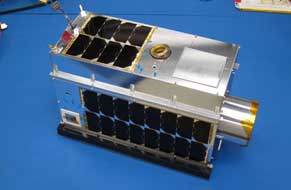Blog – Attitude Control Crucial for Practical Applications of Small Satellites – Part 1
By Dr. Robert E. Zee

Stability in orbit is a critical capability for any satellite to point an onboard sensor at a known location or object. This applies to both Earth observation and space astronomy. A key challenge for microspace missions has been developing cost-effective satellites with relatively small masses that have the attitude control needed for precise sensor pointing.
We established Space Flight Laboratory more than 20 years ago and completed many missions by conquering the attitude control issue that had plagued so many other developers. In the interim, we have developed numerous missions – such as the GHGSat greenhouse gas monitoring satellites – whose successes have relied on stability in space.
The GHGSat business model is unique. Operators of power plants, industrial sites and other emitters of greenhouse gases contract GHGSat Inc., a commercial company, to monitor their facilities from space. A miniaturized hyperspectral SWIR imaging spectrometer onboard the microsatellite targets the client facility’s location and measures its emission of specific gasses.
GHGSat calculated the pointing accuracy had to be within 2.6 kilometers of the target facility’s center and remain on target for 20 seconds, which meant the satellite would have to pan, or swivel, in orbit as it passed over the area of interest. This required exacting attitude control from a small microsatellite, using low cost sensors and actuators, to keep the main instrument pointed long enough to get a useful reading.
Keeping large satellites stable is much easier than with smaller ones of low mass. For the GHGSat business model, launching a traditional-sized satellite was not economically feasible. The GHGSat demonstration satellite, known as GHGSat-D or Claire, is a microsatellite only 15 kilograms in mass and measuring 20x30x40 centimeters.
SFL built the Claire bus based on our Next-generation Earth Monitoring and Observation (NEMO) platform with the attitude control technology required for the application. Claire was launched in 2016 and met all of GHGSat Inc.’s performance specifications. In fact, the demonstration of the microsatellite and the emissions monitoring capability was so successful the firm contracted with SFL to develop its first two commercial microsatellites scheduled for launch in the very near future.
In my next blog, I will take a deeper dive into the SFL attitude control technology that enables smaller satellites to cost effectively perform Earth observation and space astronomy applications once reserved for much larger platforms.
